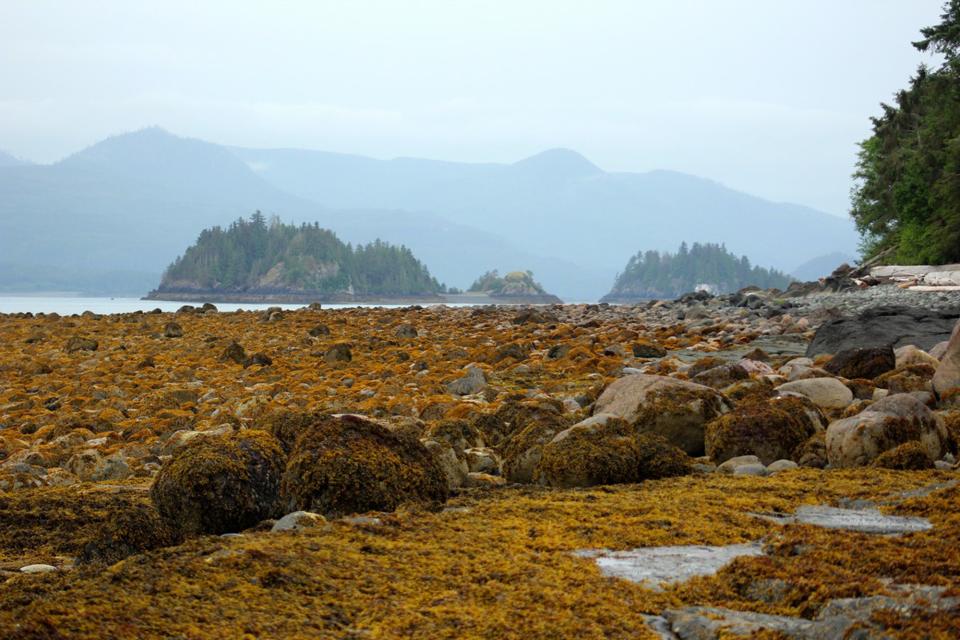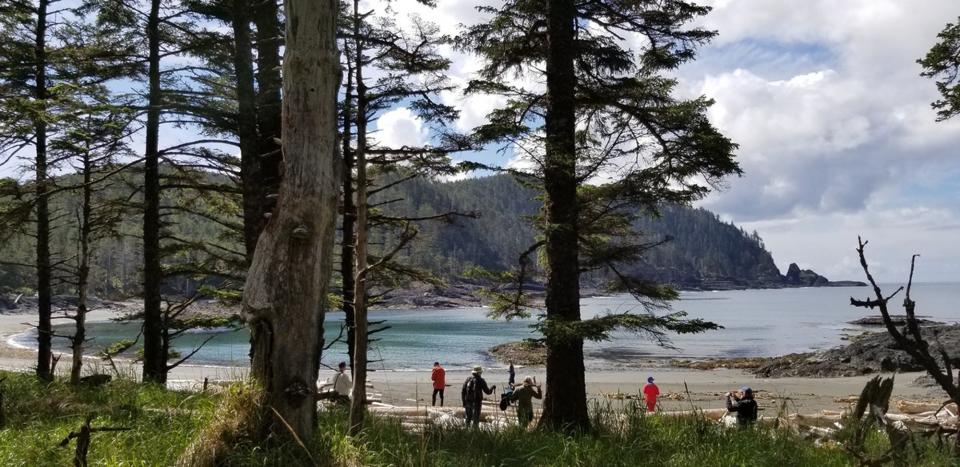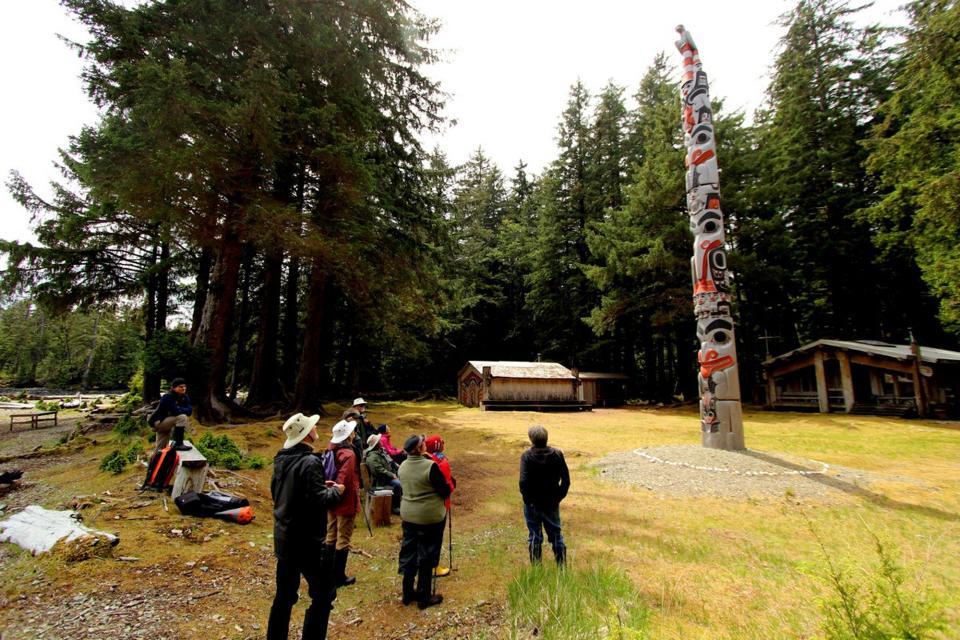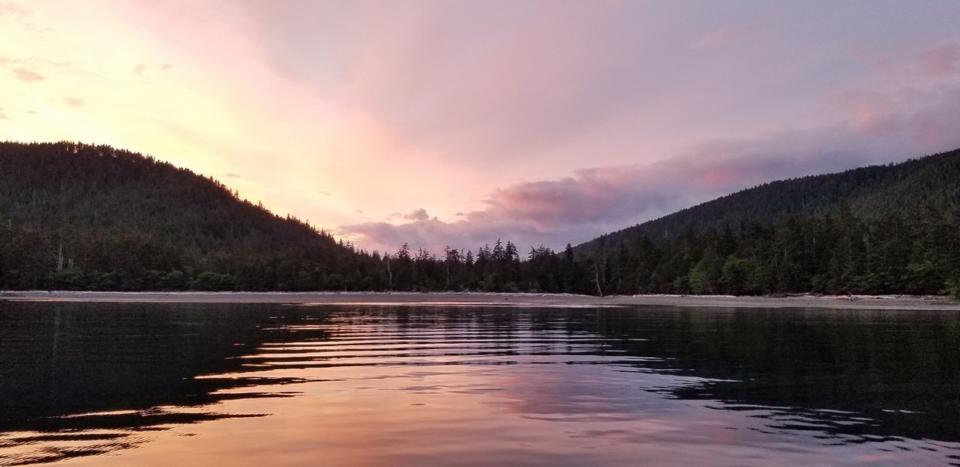How to Explore Canada’s Haida Gwaii, the Galapagos of the North
“What’s west of Westeros?” That’s the last question we hear from Arya Stark in the final moments of Game of Thrones as she boards a ship bound for the unknown. “It’s where all the maps end,” she declares to her siblings. “That’s where I’m going.”
For those who feel the same desire to explore the lesser-known corners of the globe, turn an eye towards the westernmost edge of Canada’s maps. 60 miles out from the desolate border between British Columbia and Alaska, you’ll find a pristine temperate rainforest archipelago where there is still much adventure to be found.
The islands, collectively known as Haida Gwaii, date back to time immemorial, but until relatively recently they were known on maps everywhere as the “Queen Charlotte Islands,” the name given to them by European explorers in the 18th century. In 2010, in official recognition of the Haida people who have inhabited these islands for over 14,000 years, the government of British Columbia passed legislation renaming them “Haida Gwaii,” or “islands of the people.” On June 17, 2010, in a moving ceremony called “Giving Back the Name With Respect,” leaders from the Haida Nation wrote the colonial name of their islands inside a ceremonial bentwood box and returned it to B.C.’s former premier. And on his visit to B.C. in 2017, Prince William, Duke of Cambridge collected the box and brought it home to Kensington Palace (the old namesake, Queen Charlotte von Macklenburg-Strelitz, was his great-great-great-great-great-great-grandmother, after all).

Telling someone you are heading to Haida Gwaii will elicit one of two reactions. Either they squint their eyes in confusion, having never heard of it, or they light up with knowing appreciation. The name change probably has something to do with the recognition (or lack thereof), but the fact of the matter is that not a lot of people end up there. It’s far. It’s hard to get to. The Hecate Strait, which separates it from the mainland, is considered one of the world’s most violent bodies of water, known for unpredictable swells that can reach 90 (yes, 90) feet in height. Storms can arrive simultaneously from the open Pacific and the Gulf of Alaska, resulting in wind speeds that can lift a grown kayaker clean out of the water. But for adventurous travelers, these are the things that make it all the more alluring.
In some ways, these islands are just as raw as they were when the Haida people first arrived here over 14,000 years ago. The lower third of the archipelago is entirely protected by Gwaii Haanas National Park Reserve and Haida Heritage Site or colloquially, “Gwaii Haanas” (from the Haida language for “Islands of Beauty”). There is, after all, much on these islands worth protecting. Their isolation from the mainland has resulted in a number of unique wildlife, including the largest subspecies of black bear in the world, which features a pronounced snout adapted to hunting for intertidal life in the islands’ harsh conditions. And much like the finches which Charles Darwin observed on the Galapagos, Haida Gwaii features a unique “adaptive radiation” of stickleback fish.

“You’ll see that the shape and size of the stickleback’s dorsal spines and fins vary dramatically between populations,” said Misty MacDuffee, noted B.C. biologist who served as the resident naturalist onboard my Maple Leaf Adventures expedition through the islands. “It’s not just that the fish vary island to island—you’ll see they vary lake to lake.”
Black bears and and stickleback fish are just the tip of the iceberg for Haida Gwaii’s biodiversity. These islands were not glaciated during the most recent Ice Age, so they contain ancient strains of plant life that are markedly distinct from the mainland, and the rainforest here is as thick and impenetrable as anything you’ll see in the Amazon. The inlets and fjords which separate the islands from each other are awash with cold, nutrient-dense waters, making them prime feeding grounds for orcas, humpbacks, and dolphins. In some intertidal areas, it can appear as if your skiff is cruising over rainbow-hued constellations of sea stars.
I won’t soon forget the moment my expedition brought us to the southernmost point of the archipelago, Cape Saint James. 90 miles from the mainland and 150 miles north of Vancouver Island, the waters here—where the Hecate Strait meets the Pacific—are often too violent for any ship to anchor, let alone land and go ashore, but on that particular day we were blessed with good weather.
The guide instructed us to trawl the beach in search of Japanese blown-glass fishing floats, which often make their way here from across the ocean. “We’re probably the first people to land here this season,” he told us. Moments later, looking out across the water, we watched in awe as a juvenile humpback breached 22 times in a row.

If being so up-close with nature doesn’t give you goosebumps, then encountering the traces of Haida life on these islands will. There are five “Haida Heritage Sites” in Gwaii Haanas, former villages which now offer a humbling glimpse into the way things were before European contact: centuries-old carved poles still stand, and there are silent depressions in the earth where bustling longhouses once stood; partially carved canoes abandoned in the woods; cedar trees stripped bare of their bark. One of the villages, SGang Gwaay, is a UNESCO World Heritage site, and one of the best remaining examples of Pacific Northwest mortuary poles, where the Haida would bury important or wealthy individuals in a box atop a carved pole. Walking through the quiet paths of SGang Gwaay is a spiritual experience, no less compelling than witnessing the stone heads at Easter Island, the Cliff Palace at Mesa Verde, or the standing stones at Stonehenge.

Gwaii Haanas stands apart from those places, however, because it is the world’s only example of a national park that is, under law, equally co-managed by both a post-colonial government (Canada) and the native people who have always lived there (the Haida Nation). The park is also a leader in sustainable tourism—all visitors must acquire a trip permit, which involves a ninety-minute orientation session covering safety protocol, leave-no-trace principles, and cultural sensitivity.
If the distance and the effort involved seem overwhelming, trust us—it’s worth it. Haida Gwaii is a snapshot of the unchecked power of nature, and a testament to the bravery of the humans who inhabited the area over the millennia.

When To Go
The best time to visit is roughly June to mid-September. While there will be sunny, fresh days well into the 50s and 60s, it’s not uncommon to have high winds and long overcast spells. As my guide Courtney—an exceedingly polite Canadian—told me, gently: “You wouldn’t really want to be here in October.”
What To Pack
The weather on Haida Gwaii is extraordinarily unpredictable, so you’ll want to bring plenty of reliable layers and waterproof rain gear. I picked up a fetching orange raincoat from R.E.I. that did the trick, and also wore my go-to Gore-Tex snow pants from Burton to keep my legs dry during shore excursions.
How To Get There
Pacific Coast Airlines and Air Canada offer regular propeller plane service to the very, very small airports in Skidegate and Masset. There is also a cheaper—albeit much longer—ferry service from Prince Rupert, B.C.
There are plenty of opportunities to hike and camp on your own, but to venture into Gwaii Haanas and visit all the most impactful and moving Haida Heritage sites which are accessible only by (treacherous) waters, you’ll want to sign up for a guided expedition. There are only a handful of vessels licensed to bring guests into the park, but the most comfortable and comprehensive service is Maple Leaf Adventures. The company’s new ferry-grade Cascadia catamaran provides a surprisingly stable ride through the notoriously choppy Hecate Strait, and is currently the only ship of its class bringing guests into Gwaii Haanas. They also offer a similar Haida Gwaii itinerary aboard the Maple Leaf, a classic 92-foot sailing schooner—should you really want to get your Arya Stark on.
For more information, HelloBC.com and Parks Canada are wonderful resources.
Originally Appeared on Vogue

